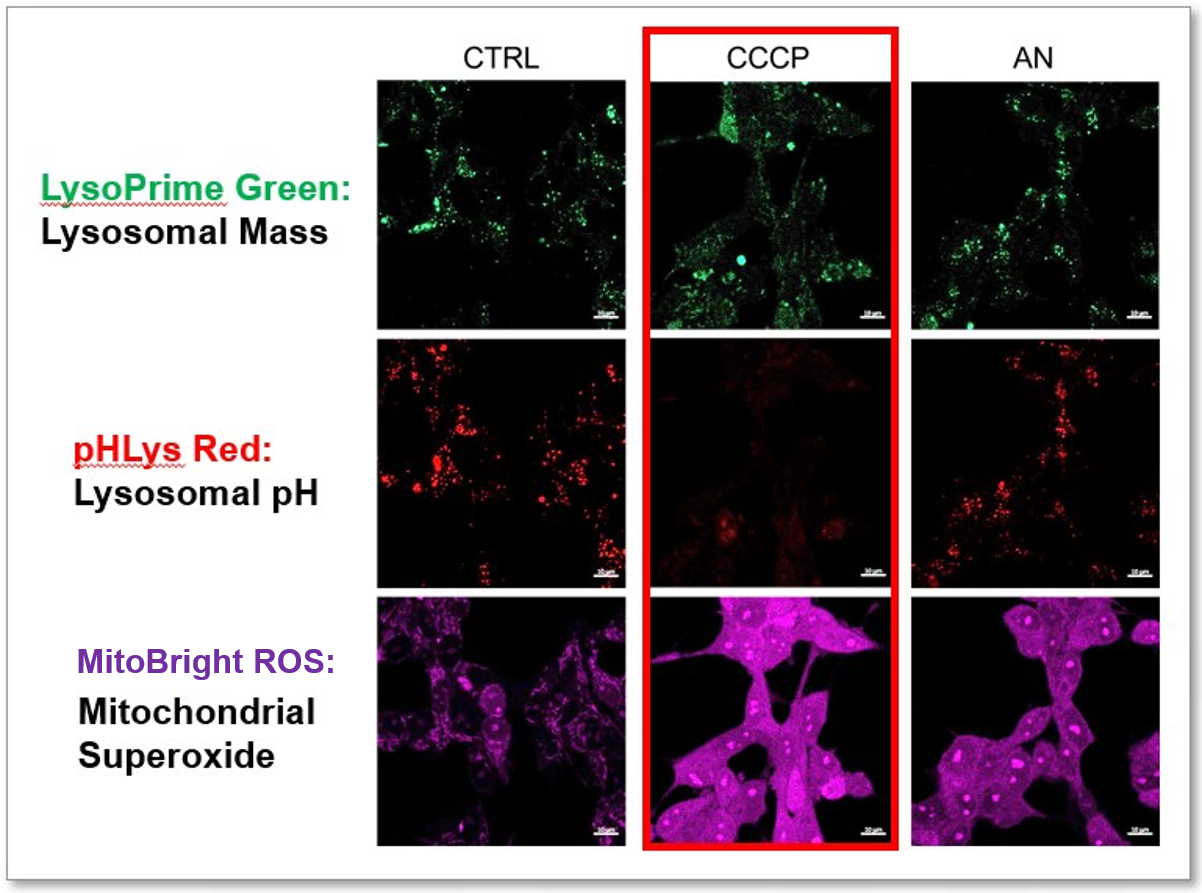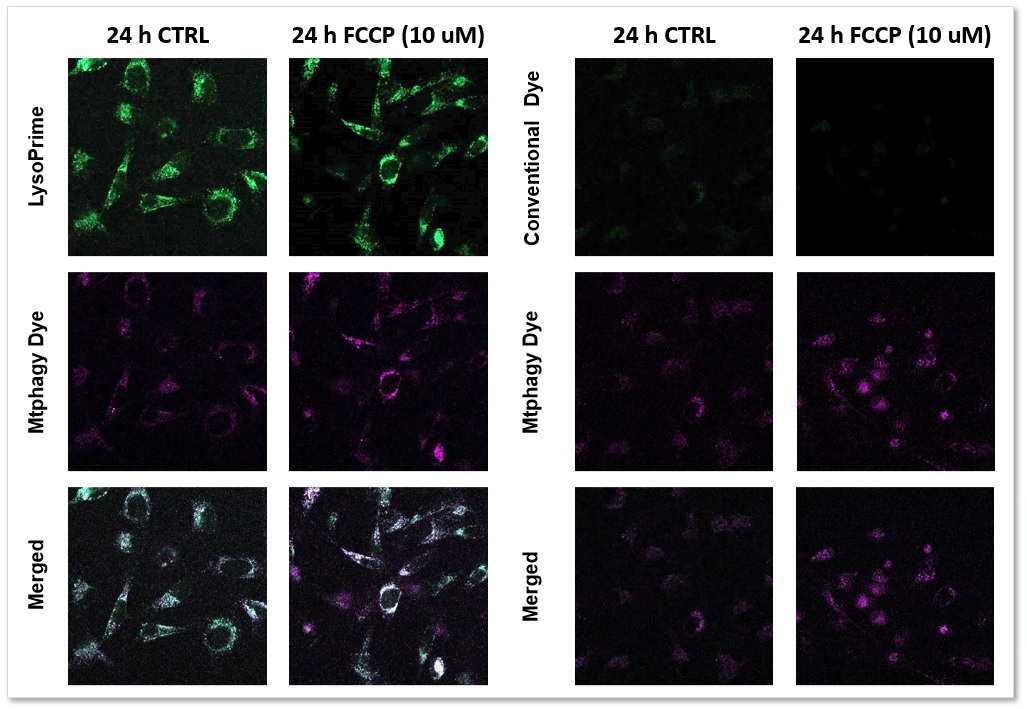|
Scientists have unveiled that hypoxia transforms regular tubular mitochondria into larger structures called megamitochondria through inter-mitochondrial contact and fusion. During hypoxia, mitochondria-lysosome interaction is enhanced, and some lysosomes get engulfed by megamitochondria, which escalates mitochondrial ROS production.
We offer lysosomal mass/pH detecting Dyes: Lysosomal Acidic pH Detection kit-Green/Red, Green/Deep Red, and mitochondrial superoxide detecting dye: MitoBright ROS - Mitochondrial Superoxide Detection
|
|
Hypoxia-reprogramed megamitochondrion contacts and engulfs lysosome to mediate mitochondrial self-digestion
Click here for the original article: Tianshu Hao, et. al., Nature Communications (2023)
Point of Interest
- - Hypoxia transforms regular tubular mitochondria into larger structures through inter-mitochondrial contact and fusion.
- - Mitochondria-lysosome interaction is enhanced during hypoxia, and some lysosomes get engulfed by larger mitochondria.
- - The STX17-SNAP29-VAMP7 complex aids this process and contributes to a self-digestion mode of mitochondrial degradation. This self-digestion mode escalates mitochondrial ROS production.
|
| Related Techniques |
- Mitochondrial staining (Long-Term Visualization)
- MitoBright LT Green, Red, Deep Red
|
|
|
|
|
|
|
|
|
|
|
|
|
|
|
| Related Applications |
Lysosomal Function and Mitochondrial ROS

-
CCCP and Antimycin are recognized inducers of mitochondrial ROS, linked to the loss of mitochondrial membrane potential. Recent studies have shown that CCCP induces not only mitochondrial ROS but also lysosomal dysfunction. To observe mitochondrial ROS, HeLa cells were labeled with MitoBright ROS Deep Red for Mitochondrial Superoxide Detection, and the lysosomal mass and pH were independently detected with LysoPrime Green and pHLys Red. Co-staining with MitoBright ROS and Lysosomal dyes revealed that CCCP, unlike Antimycin, triggers concurrent lysosomal neutralization and mitochondrial ROS induction.
Reference: Benjamin S Padman, et. al., Autophagy (2013)
Products in Use
- LysoPrime Green
- pHLys Red
- Lysosomal Acidic pH Detection Kit
- MitoBright ROS - Mitochondrial Superoxide Detection
|
Lysosomal Function and Mitochondrial ROS

-
We performed fluorescence imaging by stimulating mitophagy induction in SHSY-5Y cells stained with Mitophagy Detection(Code: MD01) and LysoPrime Green or existing products. The fluorescence signal of LysoPrime Green did not decrease and the lysosomal localization over time was confirmed. This means that the co-localization rate of the fluorescent spots of the Mtphagy Dye is higher than that of the existing product, and thus more accurate mitophagy analysis can be performed.
LysoPrime Green: Ex= 488 nm, Em= 500-570 nm
Mtphagy Dye: Ex= 561 nm, Em= 560-650 nm
Products in Use
- LysoPrime Green
- Mitophagy Detection Kit and Mtphagy Dye
|

















